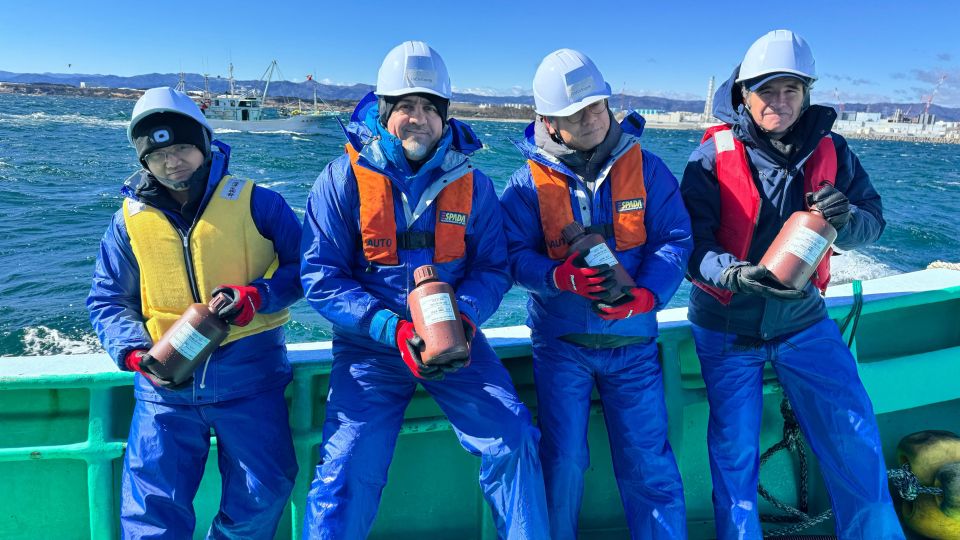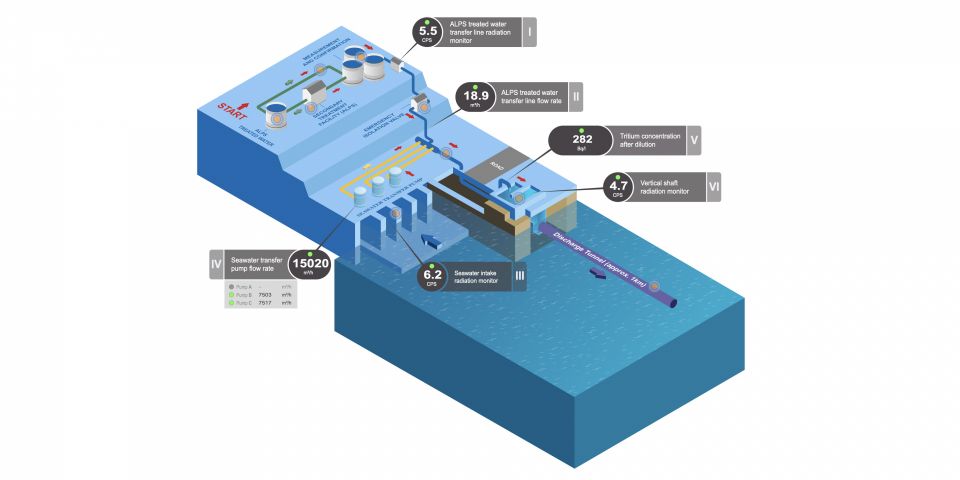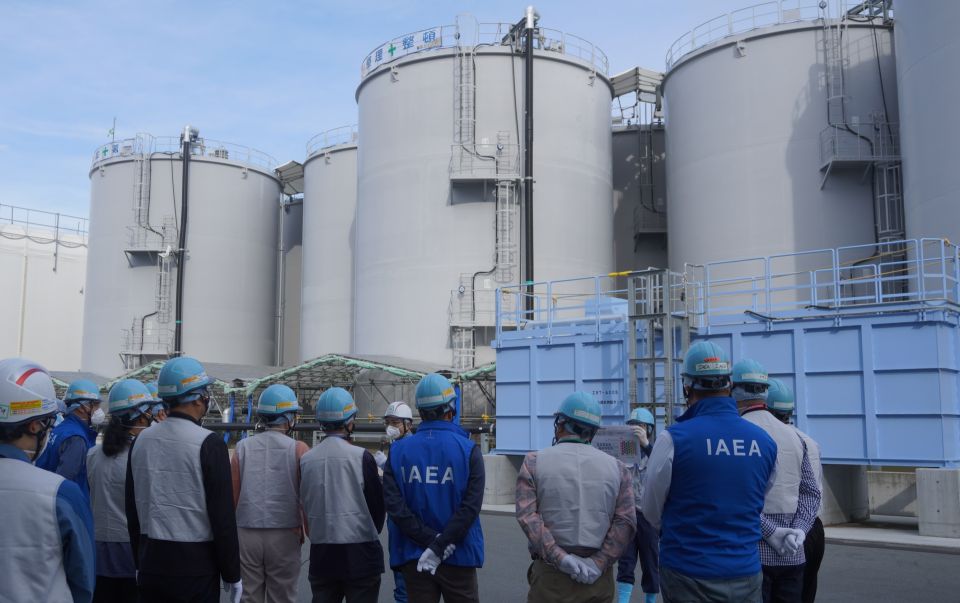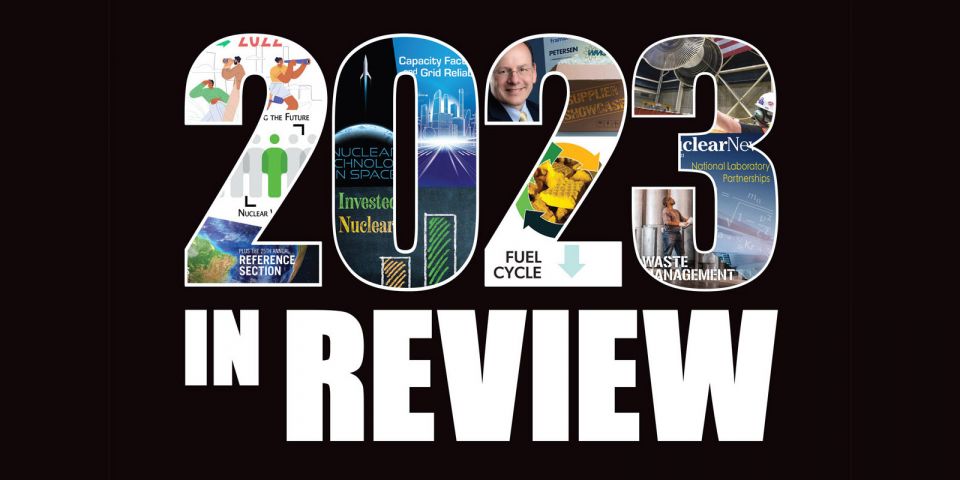Three years of available lessons from Fukushima
During the three years since March 11, 2011, the world has had the opportunity to learn a number of challenging but necessary lessons about the commercial use of nuclear energy. Without diminishing the seriousness of the events in any way, Fukushima should also be considered a teachable moment that continues to be open for thought and consideration.
As a long time member of the learning community of nuclear professionals, I thought it would be worthwhile to start a conversation that will allow us to document some of the "take-aways" from the accident and the costly efforts to begin the recovery process.
Since there are many people who are more qualified than I am to discuss the specific design details of the reactors that were destroyed and the specific site on which they were installed, I will shy away from those topics. Feel free, however, to add your expert views in the comment thread.
Before Fukushima
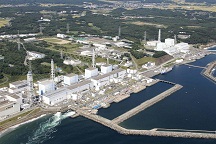 The overriding lesson for me is a recognition that people who favor the use of nuclear technology were quite unprepared for an event like Fukushima. Our technology had been working so well, for so long, that we had become complacent perfectionists.
The overriding lesson for me is a recognition that people who favor the use of nuclear technology were quite unprepared for an event like Fukushima. Our technology had been working so well, for so long, that we had become complacent perfectionists.
In some ways, we were collectively similar to perennial honor roll students who prefer doing homework to engaging in risky sports. We have been "grinds" who studied hard, followed the rules, became the teachers' pets, scored high marks on all of the routine tests, and were utterly devastated the first time we moved to a new level and encountered a test so difficult that our first attempt to pass resulted in a D-.
Many of us-and I will freely include myself in this category-had become so confident in our ability to earn outstanding grades that we did not pay attention to the boundaries of the box in which our confidence was justified.
We confidently accepted the fact that our technology was safe, had numerous layers of defense-in-depth, and was designed to be able to withstand external events, but we forgot that those statements were only true within a certain set of bounding parameters we normally call the "design basis." Because we had only rarely approached those boundaries, we had no real concept for what might happen once we found ourselves outside of our expected conditions without most of the expected supporting tools.
An extended period of exceptional performance not only made us over-confident, it raised expectations to an unsustainable level. Corporate executives, the media, and government leaders played roles similar to the parents, teachers, and administrators associated with precocious straight A students. They were used to dealing with serious mistakes and outright failures among the rest of the student body, but were surprised and flustered when one of us let them down.
We also failed to understand that we were in the same vulnerable and unpopular position as the geeks who continuously break the curve and make others look bad, year after year. As the excellent report cards kept coming, we did not pay attention to the effect those high grades were having on our peers. We did not see other students gathering into groups after the grades were posted. We did not sense their anger or overhear their plans to be ready to take advantage the first time we gave them an opportunity.
We had no similar plans prepared in case we failed; we expected we would keep performing exceptionally well.
The Fukushima test
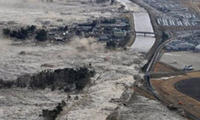 When the nearly impossible test came, our technology performed as designed, but that was not good enough. Our technology was not designed to match a natural disaster that destroyed all available sources of electrical power. The loss of vital power at a large, multi-unit facility interfered with the ability to understand plant conditions and to put water into the places that desperately needed it.
When the nearly impossible test came, our technology performed as designed, but that was not good enough. Our technology was not designed to match a natural disaster that destroyed all available sources of electrical power. The loss of vital power at a large, multi-unit facility interfered with the ability to understand plant conditions and to put water into the places that desperately needed it.
Aside: That is not to say that it could not have been designed to handle the imposed conditions. As the performance of Onagawa and Fukushima Daini demonstrate, it is possible through better design or more fortuitous operational decisions to improve the chances of avoiding the consequences seen at Fukushima Daiichi, but there is never a guarantee of perfection. End Aside.
Without water flow, the rate of heating inside the cores was determined by inescapable laws of physics. As nuclear energy and materials experts have been predicting for nearly 50 years, once the temperatures inside the water-cooled cores reached a certain point, the zirconium cladding of the fuel rods began reacting with the water (H2O) to chemically capture the oxygen and release the hydrogen.
Fukushima Daiichi plant designers expected that human operators would pay attention to the pressure building inside the primary containment and release some of the steam before breaking the containment. They apparently neglected to consider that operators would not be able to monitor pressure using their installed systems without any available electrical power.
For valid reasons, the designers did not make containment relief an automatic function or even an easy process. They probably did not expect that the operators would wait for a politician located at the end of a tenuous communications link to make the decision to release that pressure, expect that they might feel the need to wait for a report that evacuations had been completed or realize that the time delay could allow pressure to rise so high that it would be almost impossible to open the necessary valves.
The operators performed their tasks with dedication and tenacity, but their efforts fell a little short of the heroically successful similar efforts at Fukushima Daini. It's worth mentioning one particular example of unfortunate timing; the Daiichi operators invested dozens of back-breaking man hours to install a mobile generator and run heavy cables across 200 obstacle-filled meters in order to provide emergency power. They completed the hook up at 1530 on March 12. At 1536, the first hydrogen explosion injured five workers, spread contamination, and damaged the just-installed equipment enough to prevent it from functioning. (See page 8-9 of INPO Special Report on the Nuclear Accident at the Fukushima Daiichi Nuclear Power Station.)
The excessive pressures in the primary containments did what excessive pressure almost always does; it eventually found weak points that would open to release the pressure. The separated hydrogen left the containments, found some available oxygen and did what comes naturally; it exploded to further complicate the event and provide a terrific visual tool for the jealous competitors who were ready to take advantage of our failure.
The lesson available from that sequence of events were not design-specific. More foresight in the design process, solid understanding of basic materials and thermodynamic principles, and, if all else fails, empowered operators with the ability to resist political pressure can further reduce the potential for core damage and radioactive material release.
Once one of us encountered a test we could not pass, we were dazed and confused, obviously unsure what to do next. That period of uncertainty provided a wonderful opening for the opponents and competitors to take charge of the narrative, emphasize our failure under our own mantra of "an accident anywhere is an accident everywhere" and spread the word that we should not be allowed to get up anytime soon. They reminded formerly disinterested observers that we had fallen far short of our claimed perfection, took the opportunity to land a few blows while we were down, and made arrangements to ensure that our recovery was as difficult and expensive as possible.
Fears of radiation
As a group, nuclear technologists have often emphasized our cleanliness, our ability to operate reliably, and our improving cost structure.
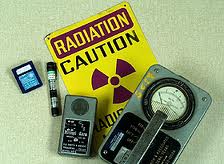 We overlooked the efforts over the years by opponents and competitors to raise special fears about the materials that might be released in the event of an accident that breaks our multiple barriers. Though we all recognize that exposure to radioactive material at certain doses is dangerous, our opponents-sometimes aided by our own perfectionist tendencies-have instilled the myth that exposure to the tiniest quantities also carries unacceptable risk.
We overlooked the efforts over the years by opponents and competitors to raise special fears about the materials that might be released in the event of an accident that breaks our multiple barriers. Though we all recognize that exposure to radioactive material at certain doses is dangerous, our opponents-sometimes aided by our own perfectionist tendencies-have instilled the myth that exposure to the tiniest quantities also carries unacceptable risk.
We had become so good at keeping those materials tightly locked up that we accepted ever-tightening standards, because they were easy enough to meet under routine conditions. Even under the "beyond design basis" conditions at Fukushima, our multiple barriers did a good enough job of retaining dangerous materials so that there were no immediate radiation-related injuries or deaths, but that isn't good enough.
There were dangerous radiation levels on site; workers only avoided injury and fatalities by paying attention and minimizing exposure times. The myth of "no safe dose" and the reality that any possible effects may occur in the distant future has continued to result in fear that effects are uncertain and will probably get worse.
The no-safe-dose assumption has made us terribly vulnerable to an effort to force us to continue meeting the expectation of zero discharges. Our stuff does "stink" on occasion; in this case if we try to hold it all in we are going to eventually suffer severe distress. The tank farm at Fukushima, with its millions of gallons of tritiated water cannot expand forever, but our opponents will prevent controlled releases as long as they can to make the pain as large as possible.
It's worth quoting the International Atomic Energy Agency's recent report about its late 2013 visit to Japan to provide an independent peer review of recovery actions. This passage comes in the context of a carefully-phrased "advisory point" that strongly recommends that Japan prepare to discharge water where most isotopes other than tritium have been removed.
... the IAEA team encourages the Government of Japan, TEPCO and the NRA to hold constructive discussions with the relevant stakeholders on the implications of such authorized discharges, taking into account that they could involve tritiated water. Because tritium in tritiated water (HTO) is practically not accumulated by marine biota and shows a very low dose conversion factor, it therefore has an almost negligible contribution to radiation exposure to individuals.
Reliability and perfection
Not only did the accident destroy the ability of four plants to ever operate again, it has reminded us that reliability is not just a matter of technology and operational excellence. If the powers-that-be refuse permission to operate, the best technology in the world will fail at the task of providing reliable power. Our competitors are perfectly content to take over the markets that we are failing to serve. The longer they perform the easier it is for people to assert that we are not needed.
We have also been taught that we have no real control over cost. The aftermath of Fukushima has shown that it's possible to establish conditions in which even the most dire prediction of economic cost is an underestimate. There is no upper bound under conditions where perfection is the only available standard.
If we do not learn how to occasionally fail, how to make reasonable peace with our powerful opposition, and continue to help everyone understand that a search for perfection does not mean that its achievement is actually possible, nuclear energy does not have much hope for rapid growth in the near future.
That would be a tragic situation for the long term health and prosperity of humanity. The wealthy portions of our current world population can probably do okay for a while without much nuclear fission power. However, that choice would harm the underpowered people who are already living and innumerable future generations who will not live as well as they could if we shy away from improving and using nuclear fission technology.
Fission technology is not perfect and poses a certain level of risk, but it is pretty darned good and the risks are well within the range of those that we accept for many other technologies that can perform similar tasks.
References:
INPO 11-005 Special Report on the Nuclear Accident at the Fukushima Daiichi Nuclear Power Station
__________________

Adams
Rod Adams is a nuclear advocate with extensive small nuclear plant operating experience. Adams is a former engineer officer, USS Von Steuben. He is the host and producer of The Atomic Show Podcast. Adams has been an ANS member since 2005. He writes about nuclear technology at his own blog, Atomic Insights.



